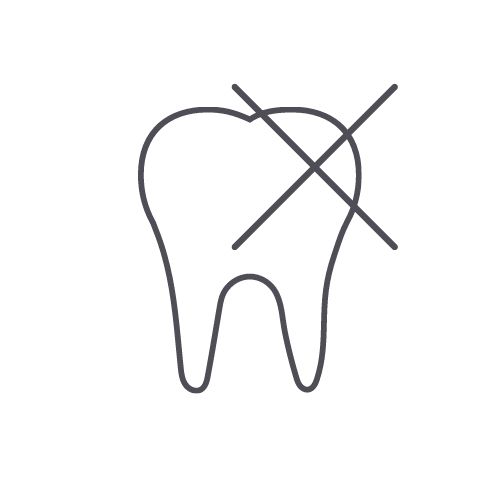Dental bridges are an excellent replacement as a fixed solution in dental prosthetics for all patients who, for certain reasons do not want or are unable to get dental implants. They restore the patients’ self-confidence, proper chewing function, and attractive smile.
A dental bridge is a fixed prosthetic replacement constructed to replace a missing tooth or several teeth.
A bridge is a more complex prosthetic solution, consisting of crowns anchored to the supports located on the existing teeth on each side of the gap, and of artificial teeth, pontics, which replace the missing teeth.
The main condition for making a dental bridge is that there is a certain number of teeth that can serve as supports and at the same time support the entire dental bridge.
It is extremely important that the dental bridge lies perfectly against the gums so that the food does not get stuck between the bridge and the adjacent gums.
Other than aesthetics, a dental bridge is also important for the patient’s health. It prevents other teeth from moving and prevents damage to the supporting tissue and jaw joints. Making a bridge at the Petković Polyclinic takes 10 to 14 days from the first visit to cementing, provided that the patient has healthy supporting teeth and gums.
The materials we use for making dental bridges are the same as for crowns. Dental bridges can be made of metal-ceramics, zircon-oxide, or glass-ceramics. Our experts will decide which material would be ideal for your case during your consultation.
A dental bridge is an ideal solution for a partially toothless jaw, as it allows the replacement of one or more missing teeth. They can be anchored on natural teeth or on implants. When we place it on natural teeth, it is necessary to drill them as there must be a certain foundation to fixate the bridge.
A dental bridge on implants is an ideal solution in situations when there are no natural teeth that would serve as bridge supports. This is most often the case when there are no molars and premolars in the back area of the jaw – instead of a partial denture, implants are installed and the bridge is fixed onto them. A dental bridge on implants provides patients with distinct functionality, aesthetics, safety, and hardness.
With the loss of a tooth, the adjacent teeth move and tilt into the toothless area, and the teeth of the opposite jaw grow into it. As the teeth tilt, oral hygiene and cleaning become more difficult, which leads to the formation of pockets in the bone where food remains, resulting in an unpleasant odor.
After losing teeth, the face often appears gaunt and aged due to the loss of vertical dimension. Thus, replacing missing teeth is not only of functional but also of aesthetic importance.

Missing teeth

Tooth drilling and impression

5-7 days









